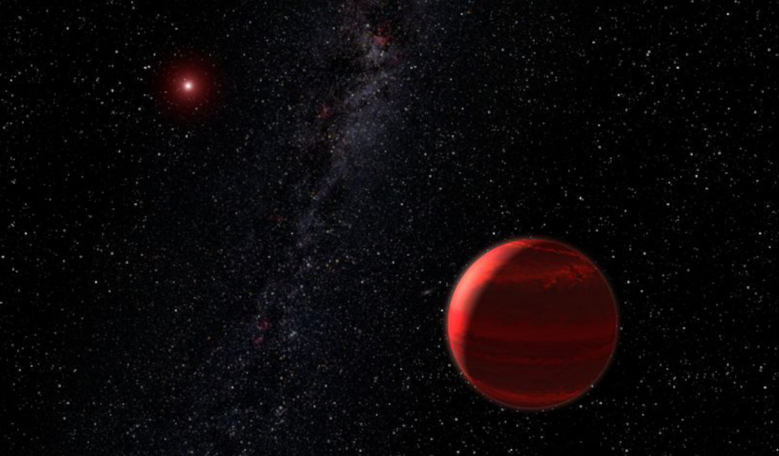After being alerted by ESA’s Gaia space telescope that a particular star far from the galactic centre was behaving unusually, astronomers have discovered a stellar binary system that is so dim, it can’t be seen at all. The technique used to find the hidden stars could be used to locate other obscured objects drifting unseen in the Milky Way say the researchers who found it.
Since beginning science operations in 2014, ESA’s Gaia space observatory has been on a mission to collect high-precision astrometric data, that is, positions, proper motions, and parallaxes, of around one billion astronomical objects (mainly stars) across the Milky Way.
Because Gaia provides near-real-time photometric data as it scans the sky multiple times, the observatory can be used to detect unexpected changes in the brightness or appearance of new objects from all over the sky.
When this happens it fires out an alert to the astronomical community, so that follow-up observations and further studies of that particular object can be made.
Four years ago, an otherwise ordinary distant star that had shone with a constant brightness for the two years that Gaia had observed it, suddenly started to brighten and dim for no apparent reason. This unusual behaviour did not go unnoticed by Gaia, so as expected, it flagged up an alert on the system so that astronomers were aware of this unexpected event.
Follow-up observations of the event, that has now been named Gaia16aya, started immediately after the announcement of the alert and it was thanks to a dedicated ground-based follow-up of tens of observers, including amateurs and school pupils that allowed an international research team led by Lukasz Wyrzykowski at the University of Poland, to work out what was going on.
It turns out the star, a K5-type giant or a super-giant, wasn’t behaving oddly at all. Instead two red dwarf stars at 57 percent and 36 percent of the mass of the Sun were found to be orbiting a mutual centre of gravity every 2.88 Earth years and getting in the way of the background star.
The team found them through their gravitational microlensing effects. Microlensing is an effect that occurs when the gravity of a foreground object causes space-time to bend, magnifying something behind it. The phenomena was predicted by Einstein and it has become a popular method by astronomers to detect distant objects that emit little light.
In this instance, microlensing helped the team to learn more about the objects in the foreground rather than the distant star in the background.
"We don't see this binary system at all, but from only seeing the effects that it created by acting as a lens on a background star, we were able to tell everything about it," said Przemek Mróz, at the California Institute of Technology and a co-author of the research paper recently submitted to Astronomy and Astrophysics Journal.
To uncover the dark sources at work in this puzzle, the team collected a very detailed light curve for Gaia16aye and spectroscopic data from a number of smaller telescopes on the ground. A light curve is a graph that show the brightness of an object over a period of time – in this case, over two years – and after deciphering multiple complex features within the data, and working out that none of the spectroscopic data pointed to outbursts from the star, the team concluded that two practically invisible red dwarfs were the cause of the dimming and brightening.
“The very densely sampled light curve was obtained solely thanks to an early alert from Gaia ,” say the international team in their research paper. “It should be emphasised that the vast majority of the observations were taken by enthusiastic individuals, including both professional astronomers and amateurs, who devoted their telescope time to this task.”
Given the success of the study, the team say that the same method could also be used to find solitary stellar mass black holes that are normally difficult to spot due to their size or other dark stellar objects lurking unnoticed in directions away from the galactic centre.











